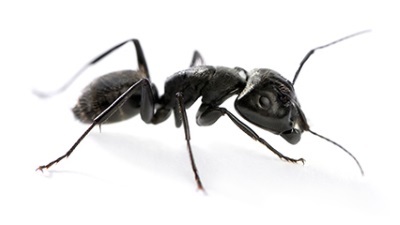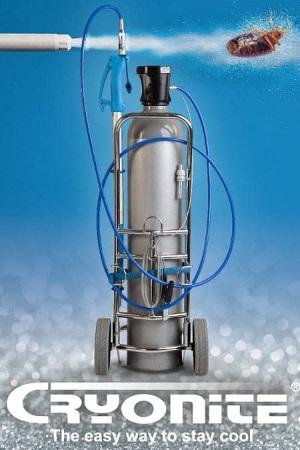The Best Strategy To Use For Pest Control Chicago
Table of ContentsAll About Pest Control ChicagoThe Facts About Pest Control Chicago RevealedPest Control Chicago - TruthsThe Facts About Pest Control Chicago UncoveredGetting The Pest Control Chicago To WorkExamine This Report about Pest Control Chicago
Growing or collecting a crop before (or after) a parasite is existing decreases insect damages by evasion. Capturing and determining a bug's growing level days can aid with planning around a bug's lifecycle. Damage tolerance can sometimes be attained by planting a plant early to ensure that the plants are stronger, more immune, and a lot more tolerant to damage by the time insect pests are existing.
By developing a little, controlled room that the bugs prefer, it is feasible to draw away insects far from the primary crop. 2 methods for this are trap chopping and strip harvesting. is growing a preferred host plant of an insect parasite near the primary plant that is to be safeguarded.
If necessary, the bugs can after that be eliminated in the catch crop. Trap crops can be any type of types that the bug preferseven be the very same varieties as the key crop - Fast pest elimination Chicago. If the trap crop coincides species as the main plant, it should be planted each time that will certainly best draw the bug far from the primary plant
Pest Control Chicago for Beginners
 This practice works when gathering a catch plant since it maintains some environment for the insect. Therefore, the bug does stagnate to find new environment in a surrounding higher worth or even more prone crop. https://fliphtml5.com/homepage/ejuux/pstc0ntrlchg/. The strategies already mentioned focus on decreasing crop exposure to insect parasites, yet it is likewise possible to lower yield loss also when insect damages occurs
This practice works when gathering a catch plant since it maintains some environment for the insect. Therefore, the bug does stagnate to find new environment in a surrounding higher worth or even more prone crop. https://fliphtml5.com/homepage/ejuux/pstc0ntrlchg/. The strategies already mentioned focus on decreasing crop exposure to insect parasites, yet it is likewise possible to lower yield loss also when insect damages occursTo practice IPM in the landscape, choose plants that are well suited to the website. Plant them correctly and keep the plants healthy and balanced by very carefully sprinkling, fertilizing, and pruning them. Keep an eye out for issues on your plants as they occur. If a pest or disease triggers undesirable damages despite preventative efforts, choose a reliable management technique that will certainly have the least amount of impact on various other living animals and the atmosphere.
The Definitive Guide to Pest Control Chicago
 Try to find symptoms the plant shows as an outcome of parasite activity. Examine your plants often. Identify your plants to make sure that the twisted fallen leaves, unusual pigmentation, or strange-looking structures you see are not a normal part of the plant. Attempt to eliminate site-related problems by making certain that the soil type, drain conditions, fertility level, and various other ecological conditions are favorable for the plant.
Try to find symptoms the plant shows as an outcome of parasite activity. Examine your plants often. Identify your plants to make sure that the twisted fallen leaves, unusual pigmentation, or strange-looking structures you see are not a normal part of the plant. Attempt to eliminate site-related problems by making certain that the soil type, drain conditions, fertility level, and various other ecological conditions are favorable for the plant.Insects and termites typically are associated with certain plants, and they adhere to particular development and behavior patterns as the period proceeds. Usage recommendation books from the library or garden facility to determine pests. If you can not find an exact description there, get in touch with a person in your regional expansion office. Discover look what i found the bug's life process, behavior, and natural enemies.
If so, an application of a nonselective insecticide could eliminate them, permitting the pest populace to rebound spontaneous by predators and parasites, which might have been offering substantial control. If a control is required, think about physical or biorational techniques first. If they are unavailable or not practical, you may need to very carefully utilize a standard chemical control.
The Only Guide to Pest Control Chicago
 Some aphids and termites can be knocked off by splashing the plant with water. Bagworm larvae can be picked off a plagued plant. You can use traps to catch certain parasites, and obstacles to protect plants from insect assault or condition infection. One efficient approach for managing gypsy moth larvae on small numbers of trees is to put a band of folded burlap around the tree trunk to supply a synthetic resting site for the caterpillars, and afterwards damage the caterpillars that collect there.
Some aphids and termites can be knocked off by splashing the plant with water. Bagworm larvae can be picked off a plagued plant. You can use traps to catch certain parasites, and obstacles to protect plants from insect assault or condition infection. One efficient approach for managing gypsy moth larvae on small numbers of trees is to put a band of folded burlap around the tree trunk to supply a synthetic resting site for the caterpillars, and afterwards damage the caterpillars that collect there.Sometimes, the most effective solution might be physically removing the plant and replacing it with one that will not be impacted by the pest or condition. Thinning crowded plants to enhance air blood circulation can decrease several disease troubles. Biorational approaches can be divided into 2 teams. The very first group includes living organisms that can kill the parasite.
Parasites survive on and typically eliminate one more microorganism, called the host. Some parasitic wasps make use of caterpillars, whiteflies, aphids, and soft scales as hosts. An example of a method that makes use of a normally taking place biochemical is the microorganism Bacillus thuringiensis (Bt). Bt consists of a protein that is toxic to certain insects, yet harmless to various other organisms.
Little Known Questions About Pest Control Chicago.
When the delicate bug parasite feeds on the sprayed fallen leaves, it will ingest the protein and be eliminated. Traditional chemicals are utilized only as a last hope in an IPM program, however sometimes are the most effective means of control. To have the best result, these products need to be applied on a specific part of the plant when the parasite is most susceptible.
Oftentimes, ecologically risk-free pesticides such as gardening oil or insecticidal soap are reliable choices - https://www.pubpub.org/user/amanda-sheets. Again, applications should be timed carefully to have the best result on the pest insect population. Since they have no residual activity after they have dried, soaps and oils are usually the alternative that is the least turbulent to populaces of advantageous microorganisms
These words, from the very least poisonous to most toxic are: "care," "warning," and "risk." Make use of these words as standards to assist you pick the least unsafe material among the effective alternatives. For most landscape bugs, you need to consider chemicals in only the initial 2 groups. Some pesticide formulations can be used only by applicators with unique training and who are accredited by the state's department of farming.
8 Easy Facts About Pest Control Chicago Shown
Refer to the Woody Ornamental Pest, Termite, and Disease Management Overview, published by Penn State Expansion, or to another present reference for a checklist of materials that are registered for use on plants in your state. Review the label to make sure that you have actually chosen a product that is effective versus the pest you have recognized, and select your timing based on specialist recommendations.